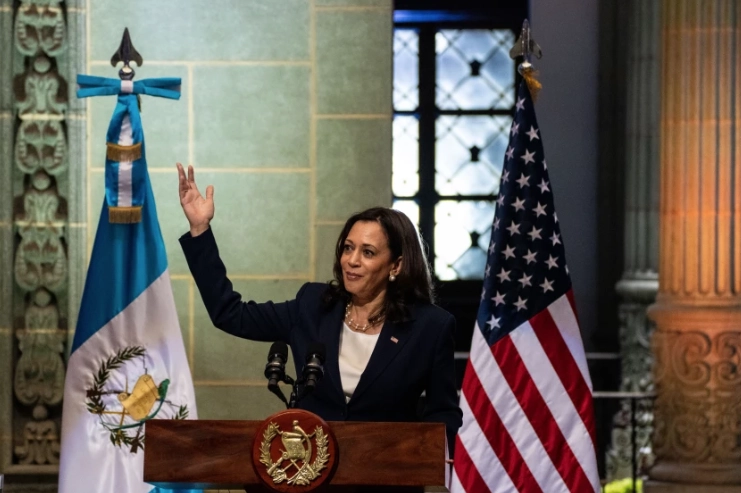Migration from Central America to the United States has increased. According to a report published in March by the International Committee of the Red Cross, it is likely to grow even more by 2022 and the security problems for people trying to cross the border between the U.S. and Mexico will worsen. Immigration has become a key issue for the U.S. and several polls place it among the top issues for Americans.
In the 2020 elections, there was reason for optimism in Central America. That year, in the presidential campaign, Joe Biden pledged $4 billion to address the causes of migration in Mexico and the Northern Triangle countries (El Salvador, Honduras, Guatemala). The causes are multiple, but mostly have to do with the economic and social development of the Central American countries.
The visits of Secretary of State Anthony Blinken and Vice President Kamala Harris to Costa Rica and Guatemala, respectively, in June of last year, could be interpreted as a sign of the Biden administration’s interest in meeting that goal. Also, Kamala Harris’ attendance at the presidential handover in Honduras on January 27 is a good sign.
Previously, no U.S. government had shown such attention to the region’s economic and social development problems. However, there were also reasons for skepticism. As a panel of experts from the Inter-American Dialogue, headed by former President Laura Chinchilla, pointed out, the Biden administration’s proposal had several limitations. Among these was the lack of a regional approach, which, as history has shown, is fundamental to understanding and addressing Central America’s questions.
It is true that through public-private partnerships promoted by the United States, efforts are being made to attract investment to the most affected countries. Several U.S. companies have expressed interest, something facilitated by a context of near-shoring. It is an opportunity, but it surely requires leverage from the public sector, through social policies in key areas such as education and health. In any case, the effects will be seen in the long term.
However, according to a story published by Time magazine last January, by mid-2021, only about US$250 million of the promised aid had been invested. It is not clear how and in what.
As the experts of the Inter-American Dialogue have pointed out, US$4 billion is actually too little for the dimensions of the Region’s problems. Nevertheless, it seemed a good start. Nevertheless, it seems highly unlikely that this goal will be met by the end of the four years of the Biden-Harris administration. Especially if the Democrats lose the Executive in November 2024.
The international context is one of the factors leading to skepticism. While from the beginning of the Biden administration, part of its foreign policy strategy has been focused on recovering alliances weakened during the Donald Trump administration (2017-2020) with Western democracies, much of the attention has been directed to Southeast Asia, particularly the rise of China as a foreign policy priority.
But their assumptions have had to change quickly. Unforeseen issues have arisen, such as the weakening of its image by the chaotic exit of its armed forces from Afghanistan. In addition, of course, Russia’s invasion of Ukraine is an affront to its status as a hegemonic power.
Domestically, voters’ attention is focused on inflation, in the midst of midterm elections in November. The structure of a bicameral political system, with presidential elections every four years, midterm elections at other levels and a two-party system already poses very complicated negotiations for a fragile governing party in Congress. Thus, a long-term agenda for Central America will encounter difficulties with a U.S. Executive that has short-term goals and global interests. However, a second Democratic administration would undoubtedly be advantageous.
That logic is mixed with Central American political problems. The U.S. government has stated that it wants to prevent the financial aid from going down the drain, due to the deep corruption, widely known. Added to this problem, is the authoritarianism that mainly affects Nicaragua and, to a lesser extent, El Salvador and threatens the other political systems.
While Nicaragua would not be eligible for the promised aid, it complicates matters. The governments in Nicaragua and El Salvador have responded with repressive measures toward civil society organizations that should channel part of the economic cooperation from actors in the international community, such as the United States, to social development projects.
Let us hope that other governments in the region do not follow suit. Unfortunately, the millions of people who need these promises of economic and social development to be fulfilled are in the middle of the political game. Therefore, thousands will continue to try to migrate to the United States even if they have to risk their lives.
At the moment, there is little information about the policies being implemented in this area. Let us only hope that interest is maintained despite the weakening factors, both circumstantial and structural, in the domestic policy of the United States and Central American countries, as well as in international policy.
Translated from Spanish by Janaína Ruviaro da Silva











